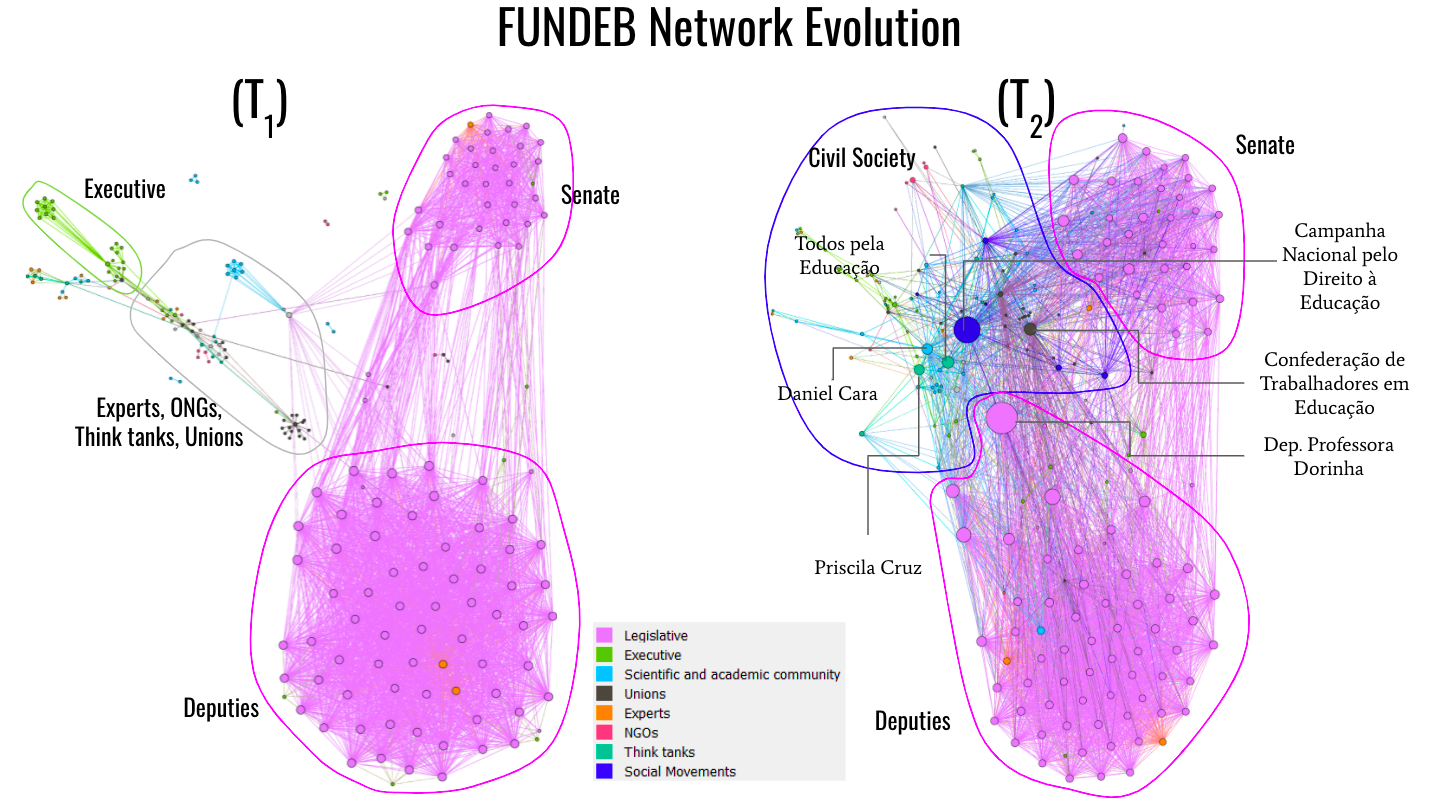 network of connections graphic
network of connections graphic
Social contract terminology is increasingly used by the World Bank and other development institutions (UNDP and the OECD) as a way of framing the relation between citizens and the state. A recent regional report argued that social contracts directly influence determine the state’s policies and actions because they determine how citizens form expectations as well as form the mechanisms through which they mobilize and engage politically.
To do so, we wanted to explore new ways of investigating citizens' expectations and perceptions, the ebb and flow of narratives and public opinion, stakeholders and social networks, and the mechanisms that enable or impede social accountability and collective action. To put theory into practice and apply these concepts to Brazil, we partnered with Tree Intelligence, which adapted their digital ethnographic methodology to map the evolution of social contracts networks related to a few case studies of past public policy reforms.
About the netnographic methodology
The framework developed by Tree Intelligence and adapted for the Word Bank uses an innovative combination of quantitative and qualitative methods including: i) Data Mining for the gathering of public digital data; ii) Social Network Analysis for the quantitative analysis of the emergent network connecting actors over time; and iii) Digital Ethnography for the qualitative analysis of the narratives flowing through the stakeholder networks.
This methodology derives from a concept of multi-stakeholder mapping that includes three important arenas of debate for society: social engagement, political and mediatic. It identifies individuals and organizations interacting and influencing each other and their communities on specific issues. The most relevant stakeholders mapped by Tree Intelligence form what is called the Small Wor
Tree Intelligence collected open and public information from Twitter accounts and websites with public access to speeches, interviews, mentions in digital media and news portals, in addition to monitoring the National Congress and public hearings.
Although the main focus of this research is on a deeper analysis of the Small World of multi-stakeholders, it also contemplates the correlation with the Big World. This allows us to understand the peaks and valleys of discussions and the relationship with the progress of the agenda in the political decision-making process.
What did we find?
One of the policies analyzed was the Basic Education Maintenance and Development Fund (FUNDEB), an equalization fund aimed at financing public basic education countrywide.
Figure
(T1) At the beginning of the analyzed period (2018) the discussion was mainly a legislative issue, with little participation of civil society and the executive branch remained practically absent.
(T2) At the end of the process (2019-2020) the structure of the network changes substantially, characterized by:
- 48% increase in the overall connectivity, indicating a boom in the topic discussion, where the civil society gains relevance particularly in the digital arena, ignited by the COVID-19 pandemic.
- 24.4% less centralized, where social movements, unions, think tanks, scientists, and experts get strongly involved in the discussions.
- 30.7% more cohesion and information flow, indicating a shorter average distance between different stakeholders
, which characterizes a more assertive and broader flow of information between the different stakeholders involved.
It’s important to highlight how think tanks - such as Todos Pela Educação - worked as network “brokers” between representatives of civil society and members of the legislative and executive branches, influencing the process with reliable technical information and arguments both in the digital and offline area. On the other hand, the executive branch remains in the periphery of both networks showed in Figure 1, with lower participation in the discussions of this policy.
From the analysis of the Fundeb reform and the other case studies, we saw two important drivers of reform success. The first one is directly related to how aligned the reform is to the expectations of citizens within their social contract. Through the media and social arenas, citizens through interest groups and demonstrations expressed support for the policy. The second driver is the importance of a trigger for political momentum. In the case of Fundeb, this trigger came from the upcoming expiration of the previous law for education financing which created a sense of urgency.

Figure
Next steps
The application of the netnographic methodology presented a complementary tool for the representation of the complex concept of the social contract, intimately linked to the understanding of social networks. In this exercise, Tree Intelligence approached the policies as multi-stakeholder network dynamics that can be measured and contextualized to identify key aspect of the success of reforms.
Tree Intelligence’s team strongly believe that this type of network-oriented and hybrid approaches can bring strong contributions to the understanding of an increasingly complex world.



Join the Conversation